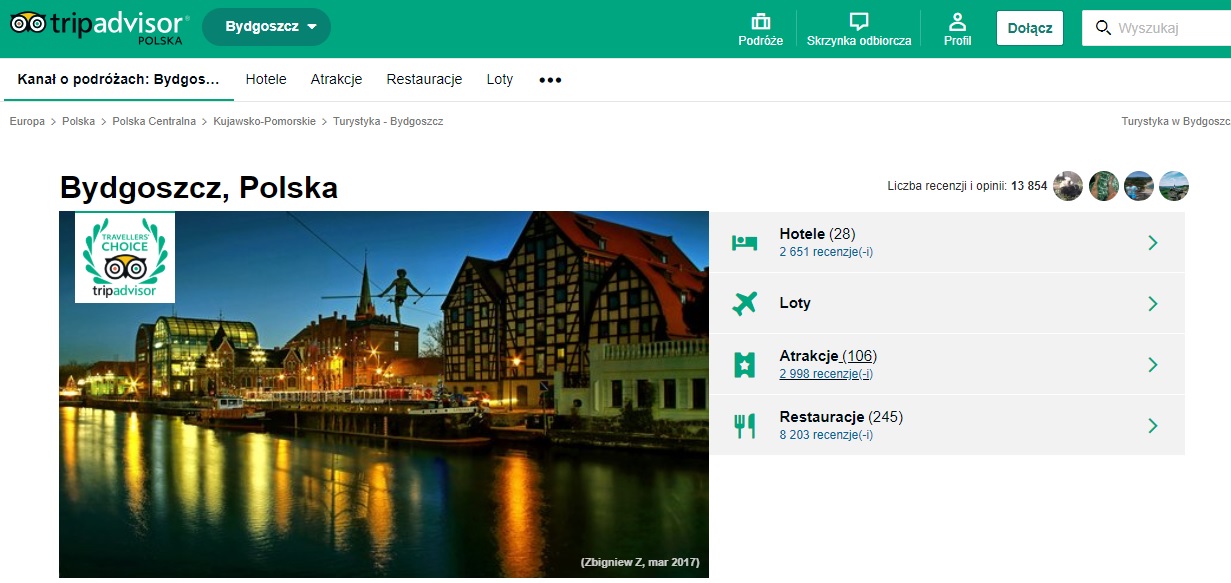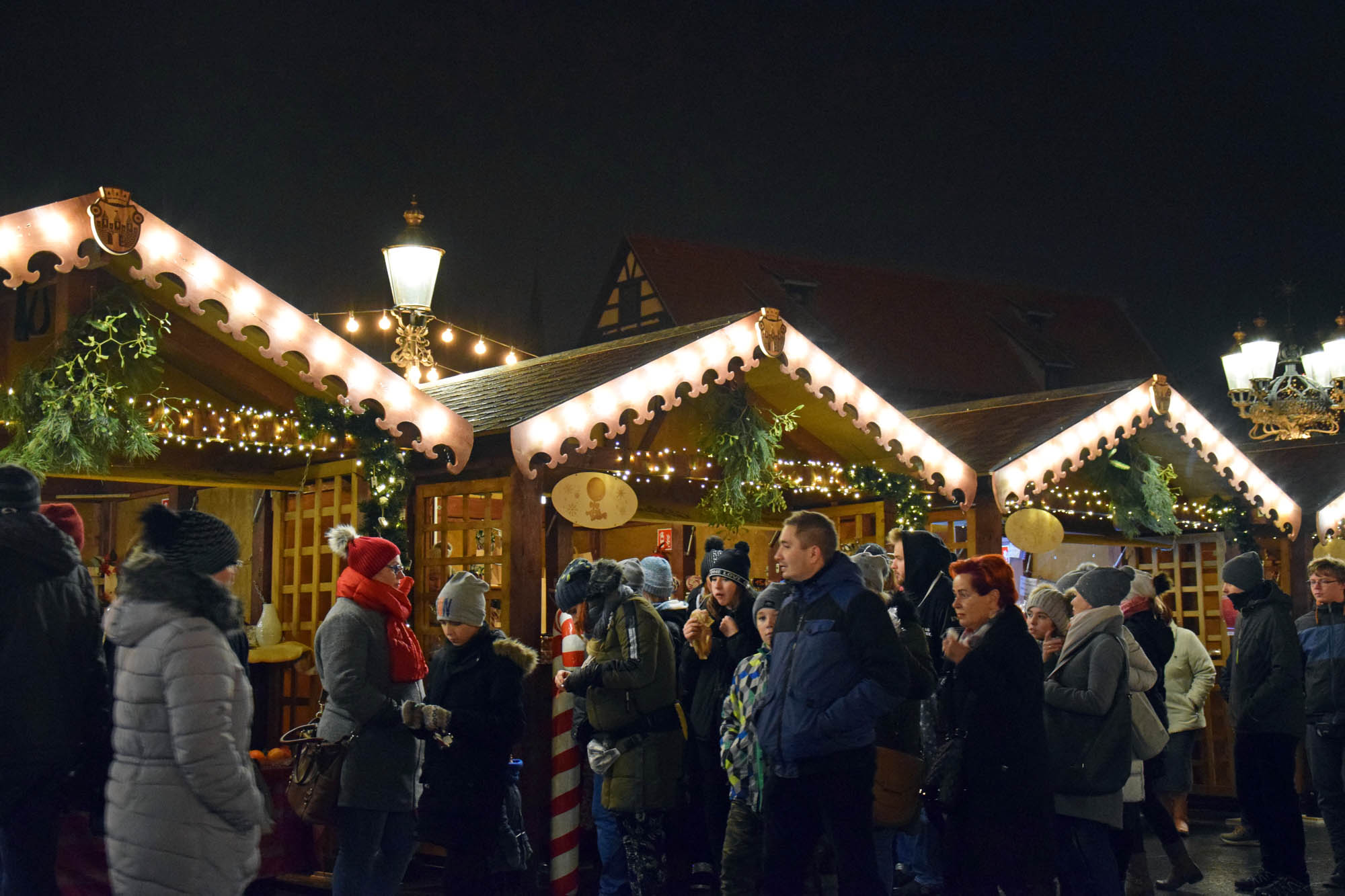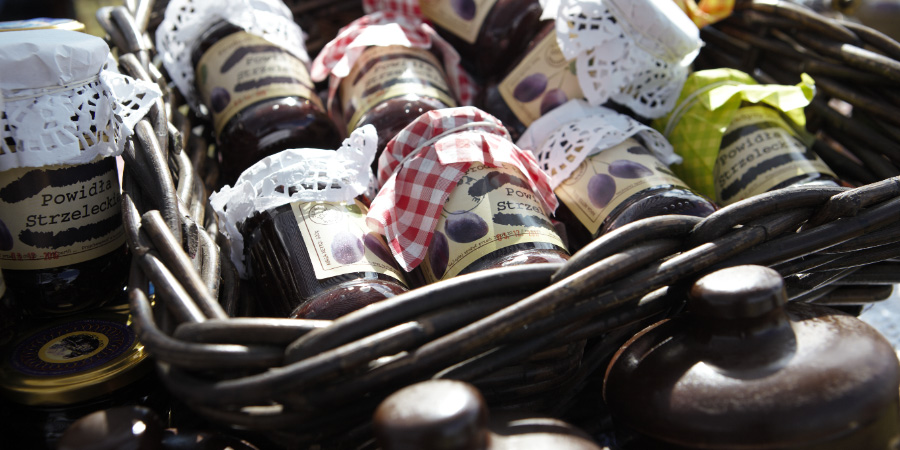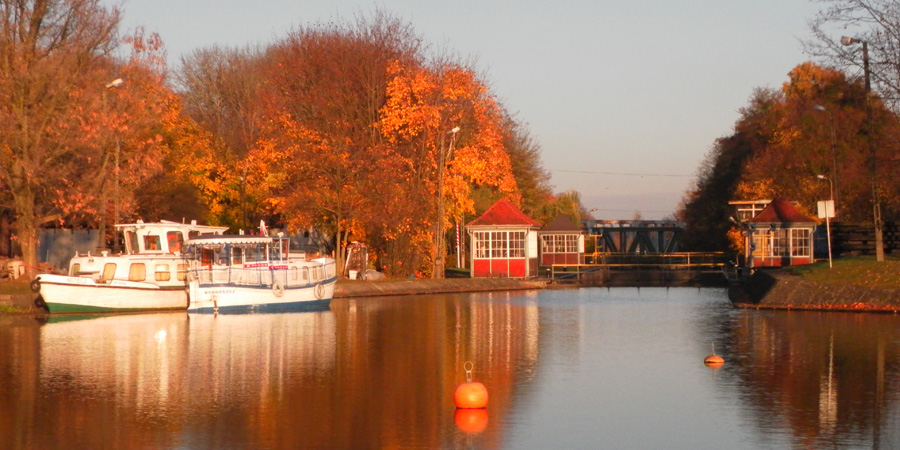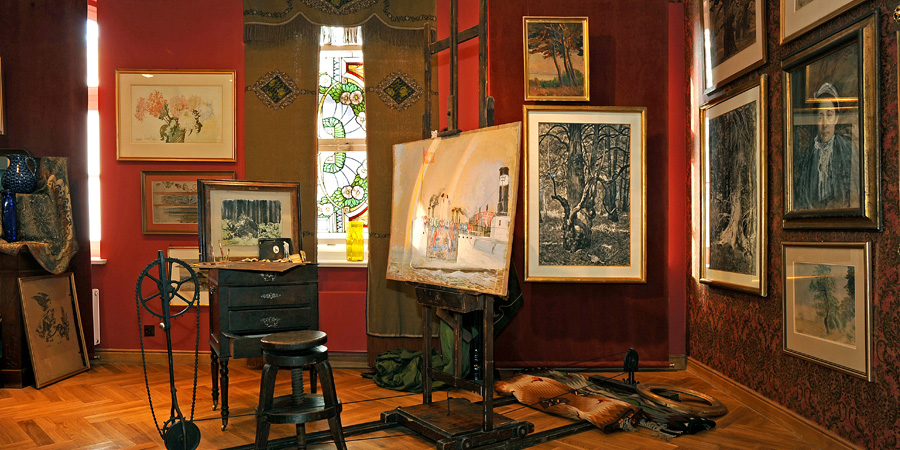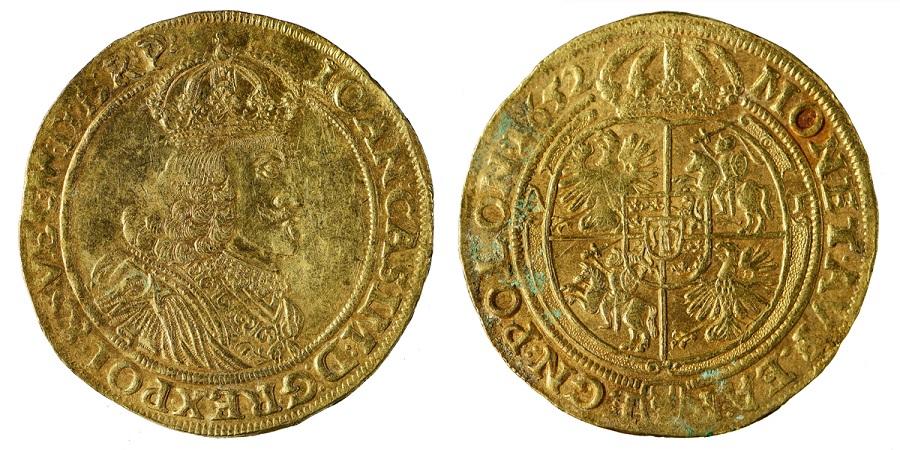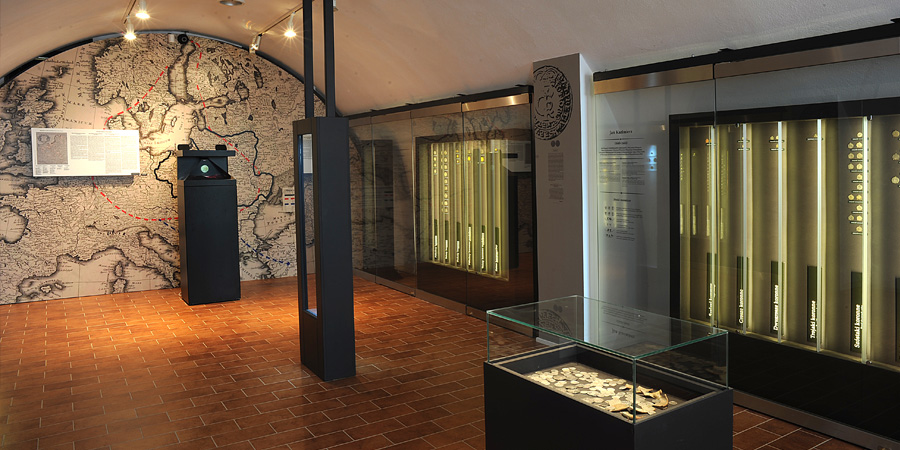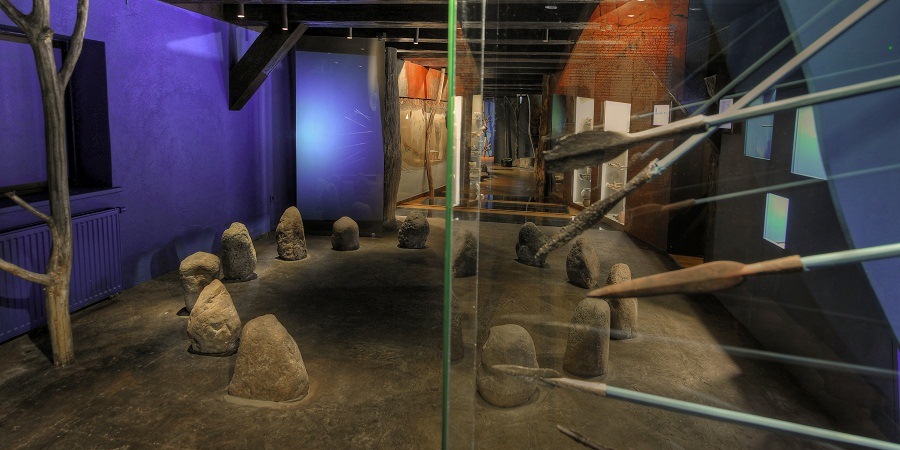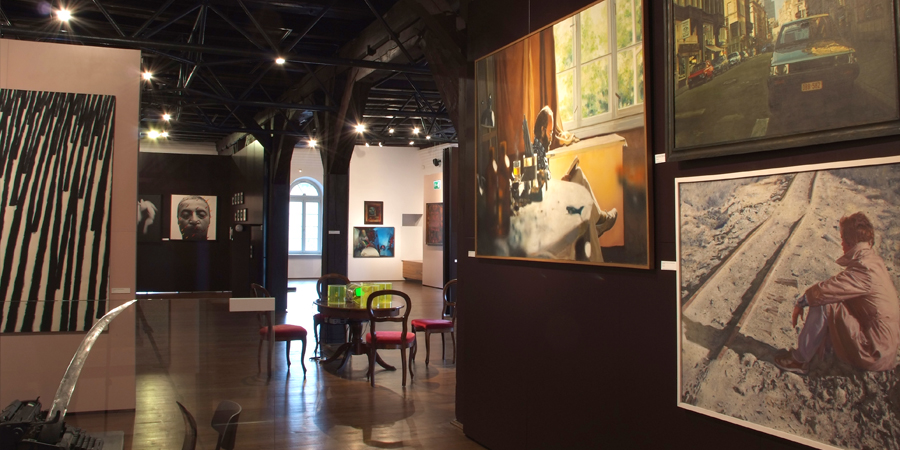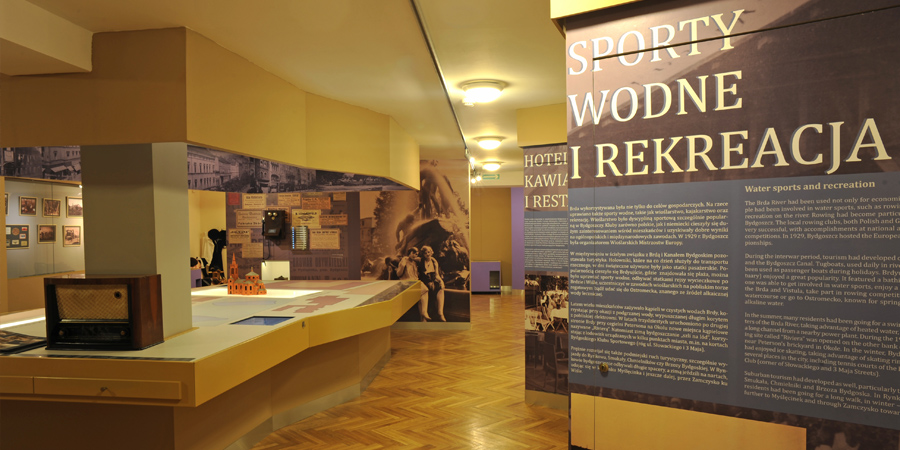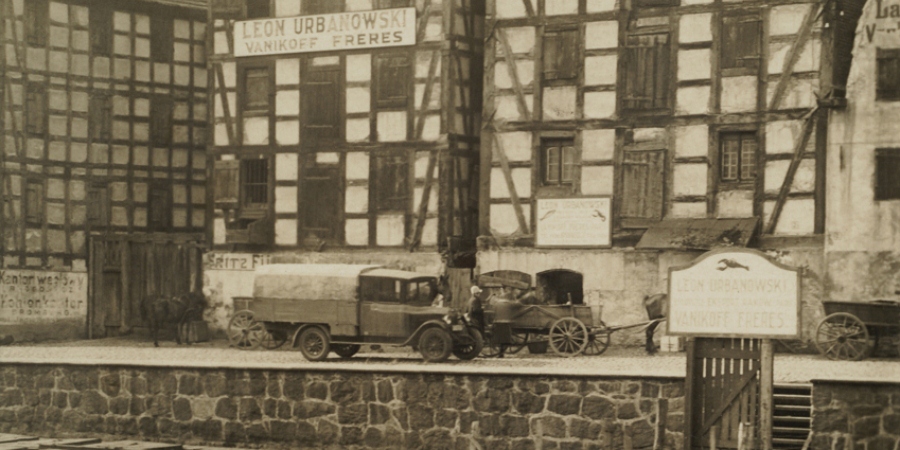The settling activity in the surroundings of Bydgoszcz is confirmed with the existence of numerous fortified settlements. Besides the one located in the centre of Bydgoszcz, some were also located in Fordon (Wyszogród), Myślęcinek (Zamczysko), as well as in other more or less distant places: e.g. in Pawłówek, Nakło on the Netze River, Więcbork, Strzelce Dolne and Pień. In many of them, in the 1950’s and 1960’s excavation works were conducted by the staff of the District Museum in Bydgoszcz.
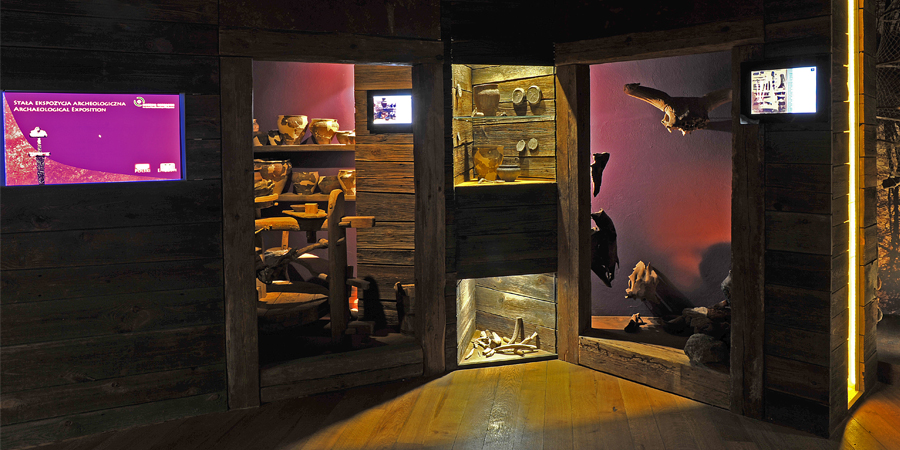 However, excavations that were particularly significant for these issues were the ones carried out in the 1990’s and in 2007 by the Regional Institute for Protection of Historic and Cultural Monuments, Department in Bydgoszcz, and the Institute of Archeology at the University of Nicolaus Copernicus in Toruń, in the area where the settlement of Bydgoszcz was presumed to have been located. Although the works covered only a small part of its area, still they provided extremely valuable information, thanks to which we can precisely reconstruct the beginnings of the settlement together with its possible appearance, and, also through the prism of the discovered artifacts of material culture, we can find out a lot about the lives of its inhabitants. Based on the historic material obtained through excavation works in the said places, it was possible to arrange an exhibition portraying the mysteries of lives of medieval inhabitants of Bydgoszcz and its surroundings, titled “In the Town of Bydgost” referring to its legendary founder. Chronological frames of the exhibition are determined with date indicators of the presented items, i.e. from the 7th to the mid 14th c. Graphic arrangements and numerous reconstructions managed to achieve the atmosphere of those times, whereas the implementation of modern media, allows visitors for active participation in the exhibition. The prepared multimedia presentations make it easier to become familiarized with the place’s history and early medieval settlements in the surroundings of Bydgoszcz. At the same time, we learn about research stations where excavation works were carried out. Moreover, we may watch a multimedia presentation on medieval military history, combined with an interactive dictionary of medieval armament and a multimedia animation showing invasion of Wyszogród by Bolesław Wrymouth. It was prepared based on the description found in the Chronicle of Gallus Anonymus. It is also possible to watch a film concerned with everyday life in the period of the early Middle Ages. The arrangement was inspired with the actual layout of the town. Its upper part, were the royal clerk and knights were located, we can see the representation of the issues related to the trade and army, as well as those of everyday life, including a reconstruction of an interior of an early medieval hut. Visualization of the lower town, inhabited by menial people and craftsmen, provides a reconstruction of the way of obtaining food and some selected types of craft. Both the parts of the town are divided with a partial reconstruction of the upper floor of the rampart. Under the wall, on the other hand, we can see wooden elements of fortifications recovered from the ground during excavation works that were conserved in the Documentation and Conservation Laboratory of the Institute of Archeology at the Nicolaus Copernicus University in Toruń. The sphere related to religious beliefs was only slightly accentuated with the reference to the oldest grave in the cemetery by the church of St. Giles. In order to preserve the atmosphere of a medieval town, the authors decided not to use any traditional legends and charts. All the information was placed in digital frames where it is possible to find descriptions of many aspects of the medieval reality, as well as results of researches conducted by scientists of various specialties. In each part of the exhibition, the visitors are accompanied with sound effects related to particular subject matters.
However, excavations that were particularly significant for these issues were the ones carried out in the 1990’s and in 2007 by the Regional Institute for Protection of Historic and Cultural Monuments, Department in Bydgoszcz, and the Institute of Archeology at the University of Nicolaus Copernicus in Toruń, in the area where the settlement of Bydgoszcz was presumed to have been located. Although the works covered only a small part of its area, still they provided extremely valuable information, thanks to which we can precisely reconstruct the beginnings of the settlement together with its possible appearance, and, also through the prism of the discovered artifacts of material culture, we can find out a lot about the lives of its inhabitants. Based on the historic material obtained through excavation works in the said places, it was possible to arrange an exhibition portraying the mysteries of lives of medieval inhabitants of Bydgoszcz and its surroundings, titled “In the Town of Bydgost” referring to its legendary founder. Chronological frames of the exhibition are determined with date indicators of the presented items, i.e. from the 7th to the mid 14th c. Graphic arrangements and numerous reconstructions managed to achieve the atmosphere of those times, whereas the implementation of modern media, allows visitors for active participation in the exhibition. The prepared multimedia presentations make it easier to become familiarized with the place’s history and early medieval settlements in the surroundings of Bydgoszcz. At the same time, we learn about research stations where excavation works were carried out. Moreover, we may watch a multimedia presentation on medieval military history, combined with an interactive dictionary of medieval armament and a multimedia animation showing invasion of Wyszogród by Bolesław Wrymouth. It was prepared based on the description found in the Chronicle of Gallus Anonymus. It is also possible to watch a film concerned with everyday life in the period of the early Middle Ages. The arrangement was inspired with the actual layout of the town. Its upper part, were the royal clerk and knights were located, we can see the representation of the issues related to the trade and army, as well as those of everyday life, including a reconstruction of an interior of an early medieval hut. Visualization of the lower town, inhabited by menial people and craftsmen, provides a reconstruction of the way of obtaining food and some selected types of craft. Both the parts of the town are divided with a partial reconstruction of the upper floor of the rampart. Under the wall, on the other hand, we can see wooden elements of fortifications recovered from the ground during excavation works that were conserved in the Documentation and Conservation Laboratory of the Institute of Archeology at the Nicolaus Copernicus University in Toruń. The sphere related to religious beliefs was only slightly accentuated with the reference to the oldest grave in the cemetery by the church of St. Giles. In order to preserve the atmosphere of a medieval town, the authors decided not to use any traditional legends and charts. All the information was placed in digital frames where it is possible to find descriptions of many aspects of the medieval reality, as well as results of researches conducted by scientists of various specialties. In each part of the exhibition, the visitors are accompanied with sound effects related to particular subject matters.
The history of the town of Bydgoszcz and its significance at the times of the beginnings of the Polish state, was shortly presented on an introduction chart. However, the answer to the question of where the town was located and what it supposedly looked like we will find in the presentation titled Here, where Bydgoszcz was born. On the other hand, we can learn about the lives and occupations of the inhabitants of this town on the Brda River, and other early medieval places in its surroundings, from the recovered material remains after our ancestors. The exhibition presents various tools, decorations, arms, articles of everyday use, etc., that help to become familiarized with different aspects of the life in the town, as well as in the borough.
The narration of the exhibition begins with issues concerned with obtaining food and selected types of craftsmanship. The then people worked in the field, bred animals, hunted, fished, picked fruit and forest produce. Farming and animal breeding (practically self-supporting) required great deal of work and was related to the constant fight with the omnipresent wilderness, and grabbing piece by piece of the land in order to transform it into farmland. Also the activities connected with the production of clothes, equipment and objects of everyday use were carried out by using one’s own means. Each family was able to satisfy its needs. However, there was also a sufficient number of craftsmen dealing with particular works. It was possible to purchase from them a better quality products. This is clearly visible in the example of pottery. Initially, a part of clay dishes used within a household were made individually, by hand. However, the constant demand for this indispensable and fragile product led to its broader production. In order to differentiate the products from various workshops, potters impressed special marks on the bottoms of their dishes. The most commonly discovered objects related to farming include whetstones used for sharpening knives and other iron tools; whereas, among historic items related to animal breeding we often find ceratoid sidescrapers for combing out animals, though they where also a part of the equipment used by horsemen. The finds of iron hooks confirm that it was common to fish with the use of a fishing rod. It is also possible that fishing nets were also in use, which is indicated by the discovered fishing weighs made from various materials. The objects of common use, both for transportation purposes and for fishing, were dugout boats (from hollowed single tree trunks), like the one presented at the exhibition. It is dated for the end of the 13th c., and was found in Mątwy, near Inowrocław, in the Netze River. Hunting provided meat, leather, fur, as well as raw materials in the form of horns and bones, which were used in the production of ice skates, cobs, awls, needles, needlers, knife handles or helves of other tools, and various kinds of lining. It is worth noticing that among bone products, the ones prevailing in the exhibition are the ice skates discovered mainly in the course of excavation works conducted in the town. At that time, they were made from bovine tibia, ribs, horns, in which holes were drilled, and that were fastened to feet with leather straps. While skating, people would help themselves with long sticks with sharpened endings. A vast majority of skates discovered in the Bydgoszcz settlement proves that already in the Middle Ages, our ancestors were particularly related to the Brda River. The progress in handicraft production was closely related to the development in trade exchange. Fairs were held at specified times, where, apart from handicraft products people would sell agricultural and forest produce, cattle and horses. Sometimes the fairs were visited by foreign merchants offering the local population many attractive goods: ornaments, at times made of gold, dishes made of glass, objects of everyday use made from the raw materials that were non-existent in our lands, e.g. spans made from Volynia slate. Favourable location of the Bydgoszcz settlement by the passage over the Brda and by the route joining Kuyavia and Pomerania, caused it to become an important trade centre; however, no coins were found in the course of excavation works, and only an insignificant number of luxury goods (single ornaments). Still, a high concentration of silver treasures located in the area of the present Bydgoszcz and its immediate proximity, confirms the diversity of trade contacts. Those deposits are usually made up from pieces of silver coins (usually Arabic) and ornaments (like e.g. the one discovered in Strzelce Dolne), that is why we called them “chopped treasures.” The presence of Arabic coins indicates that the lands were penetrated by Jewish and Arabic merchants and constitutes a proof for the functioning of a trade route from Middle Asia to the Polish lands. Lumps of amber and some semi-finished amber products obtained during excavations works in the Bydgoszcz settlement point to contacts with the Baltic coast. The constructions of the settlement comprised of huts of wattle-and-daub or frame wall structures, erected at the external periphery of the square, at the ramparts. The exhibition presents a partial appearance of a hut. Under the corner stone of a hut, a sacrifice was made to ensure durability of the household and prosperity of its inhabitants. Visitors may also see an interior of a household where clothes and valuable objects were stored in wooden chests, sometimes richly ornamented, with metal fittings. Benches or pallets – shallow troughs put upright against the wall during the day constituted places to sleep. In each house – on the floors, benches, stools and chairs there were many leather coverlets. In the living chamber, there was always room for clothes, ornaments and tools. The common clothes were made of linen or wool. Men wore trousers and shirts complimented with a coat thrown at their shoulders. Women, on the other hand, wore long dresses or skirts – aprons and shirts, and also coats. Due to the durability of the material they were made from, the most common remnants of clothes are their metal parts and ornaments made from precious metals, bronze, iron and glass. The most popular Slavic ornaments were temple rings, small metal rings put on headbands or bonnets. Besides that, women often wore earrings, rings, bracelets, necklaces and beads made from various raw materials. Undoubtedly, other ornaments of Slavic origin are also the so-called kaptorgas – various kinds of small sacks or boxes worn on the neck, made from different materials depending on the wealth of their owners, from wool to silver. Within households we discover such objects as: animal figures, musical instruments (whistles, pipes), dices and astragals – bones of cattle, sheep, goats or pigs used for entertainment (games) but also believed to have some magical functions. The settlement also had a troop of mounted and infantry warriors. The rich assortment of militaria (swords, spearheads, axes, arrowheadand bolts) found in the surrounding areas of Bydgoszcz confirms the hypothesis that the settlements existing in that place initially protected the area of the borderline of the state created by Mieszko I in Pomerania and Great Poland, and then constituted strategic points for the maintenance of newly conquered settlements. The military forces of the first Piasts also included some foreign warriors (mostly Norman). These assumptions are confirmed with the findings of warrior graves containing some Scandinavian-type armament dated on the 10th/11th c. in which warriors were buried according to the Norman burial rite, e.g. in Pień, Dąbrowa Chełmińska commune. The presence of Norman warriors is also confirmed with some loose finds of militaria of Scandinavian origin. Among them, we should point to a sword with richly ornamented hilt found in Lutowo, Sępólno Krajeńskie commune. It represents a type “S” sword, according to Petersen’s classification, and is dated on the 10th c. Also in the 11th c. this was the area of Polish-Pomeranian borderline, which caused it to be the place of mutual invasions. Only the expedition of Bolesław Wrymouth to Pomerania in the first half of the 12th c., that was noted in the Chronicle by Gallus Anonymus, brought Bydgoszcz and the surrounding settlements back into the orbit of the Polish state. A sword presented at the exhibition, located near the Wyszogród settlement, comes from that period and is today a silent witness of those events. What also draws the attention at the exhibition, is a sword discovered in the course of works conducted in the Bydgoszcz settlement. An X-ray analysis revealed an inscription that at a current research stage is impossible to fully reconstruct. Due to the fact that the work of blacksmiths was associated with the risk of fire, forges were usually located outside the ramparts. That is why we end the visit at the exhibition by admiring metallurgic products (chisels, drills, keys, nails, chains, staples).
The exhibition In the town of Bydgost opens a thematic cycle devoted to the earliest history of Bydgoszcz and its surroundings. This is a permanent exhibition; however, not a static one. It is constantly complimented with archeological findings and research results, and updated with the use of modern multimedia techniques.
| Author: Józef Łoś, Jolanta Szałkowska-Łoś | |
| Location of the exhibition: Archaeological Collections – 2 Mennica Street on the Mill Island | |
| Permanent exhibition | |








